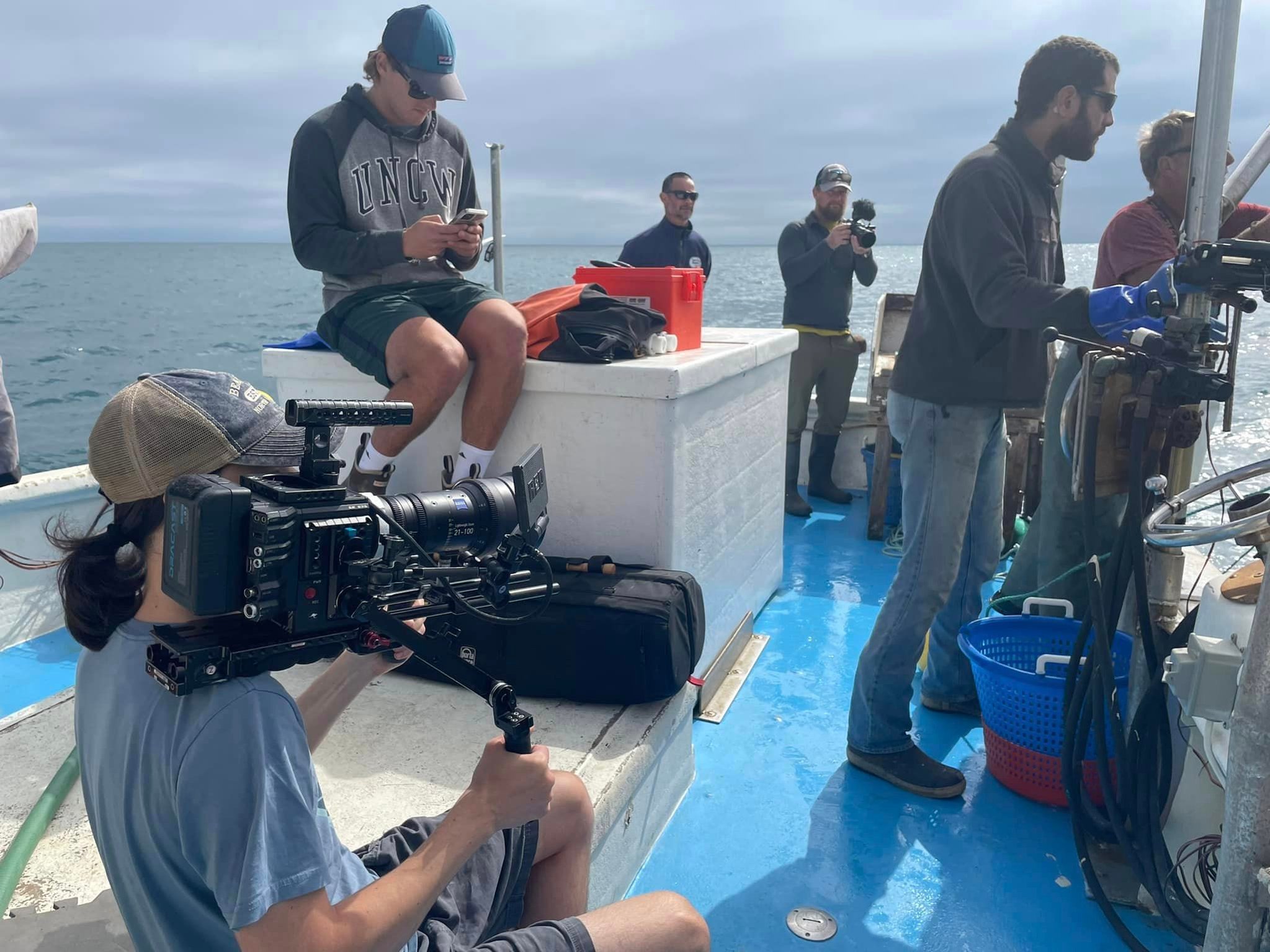Giving Back – Saving the Black Sea Bass Fishery on the Lady Kay
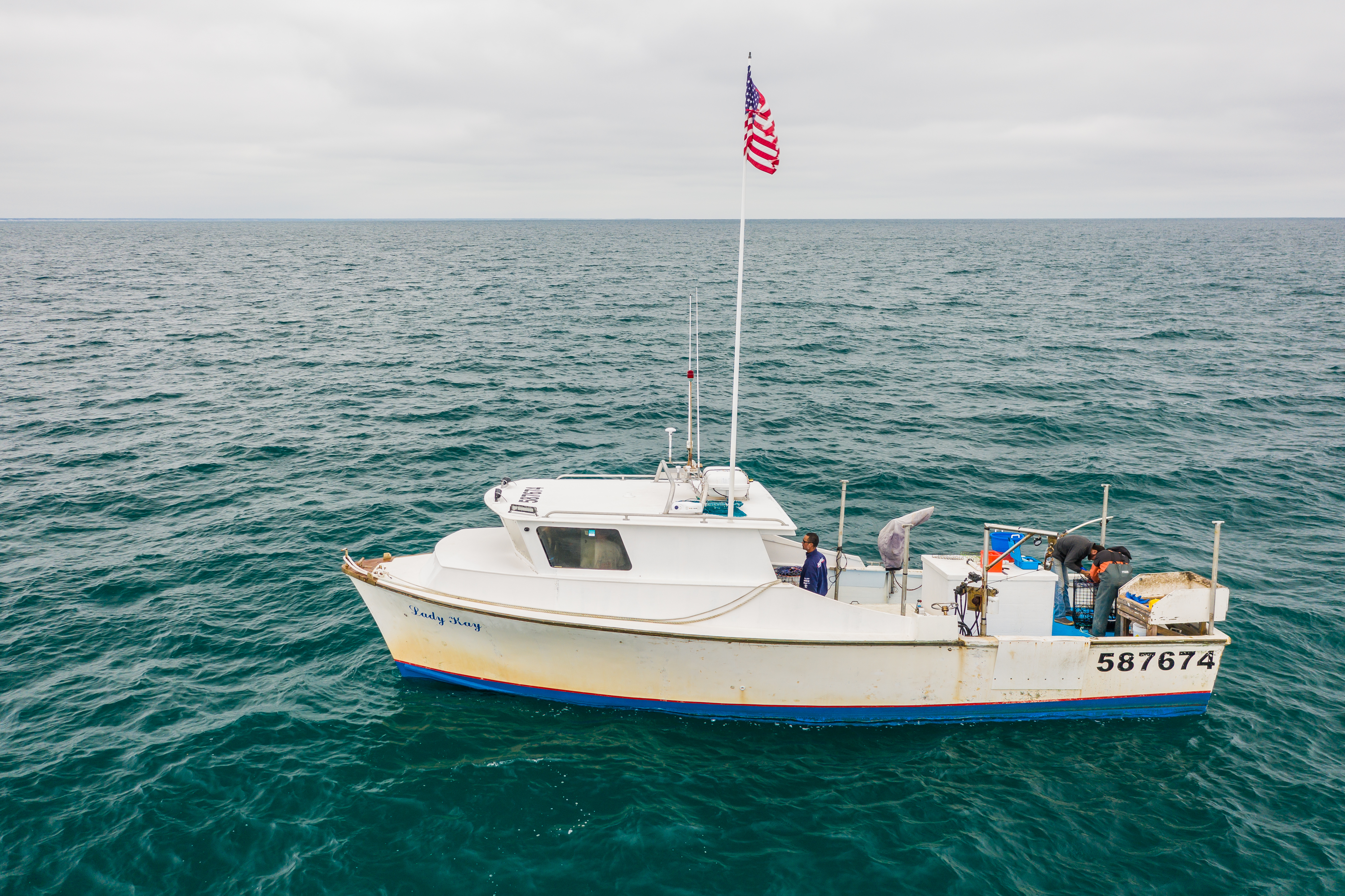
By Jason Andre – Media & Communications Specialist, Wells Insurance
Saving the whales and a way of life at the same time is pretty cool! Thanks to the Volunteer Paid Time Off benefit that all employees at Wells receive, I was able to take time away from work to go tell a really cool story.
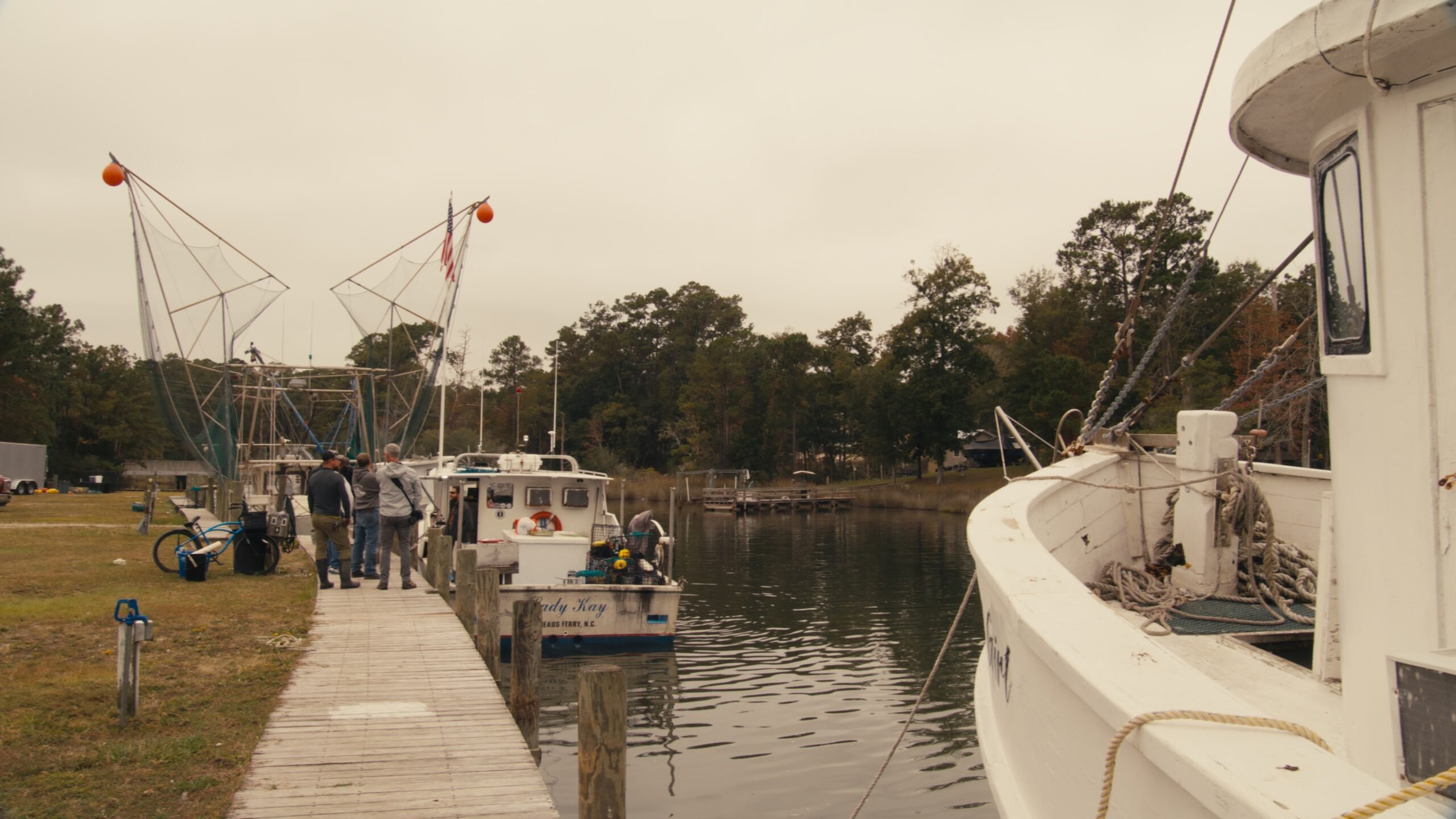
Sneads Ferry, NC. October 24th, 2022.
Among the towering retracted arms of the shrimp boats sits a relatively small 40 something foot fishing boat. The Lady Kay sits at the dock, plain and unassuming. Her open back and makeshift fish sorting table at the port stern is dirty and the paint is worn. A large ice box sits in the middle of the deck awaiting the day’s catch and on her roof is a series of radars, an EPIRB unit, and a bright crisp brand new looking American flag on a flagpole as tall as the shrimp boat arms. The bright flag flaps in the cool fall breeze against a gray overcast morning sky. The Lady Kay’s cabin is stuffed with everything from lifejackets to welding gear, snacks for the day, and miscellaneous wires, foul weather gear, and backpacks. Captain Mike “Chops” Cowdrey quietly boards her and begins flipping switches as her navigational screens begin to blink on and the old engine growls, gurgles to life and settles on a soft purr.
Most of the time environmentalism and commercial fishing are at odds with each other. However, in our local fisheries there are a handful of folks hatching a plan to use sustainable fishing practices along with new technology that is both safe, sustainable, and may save a local fishing tradition that has been all but lost. What’s even better is that there are other fisheries around the country taking notes and flying over here to North Carolina to learn what’s going on, in order to bring home similar fishing practices.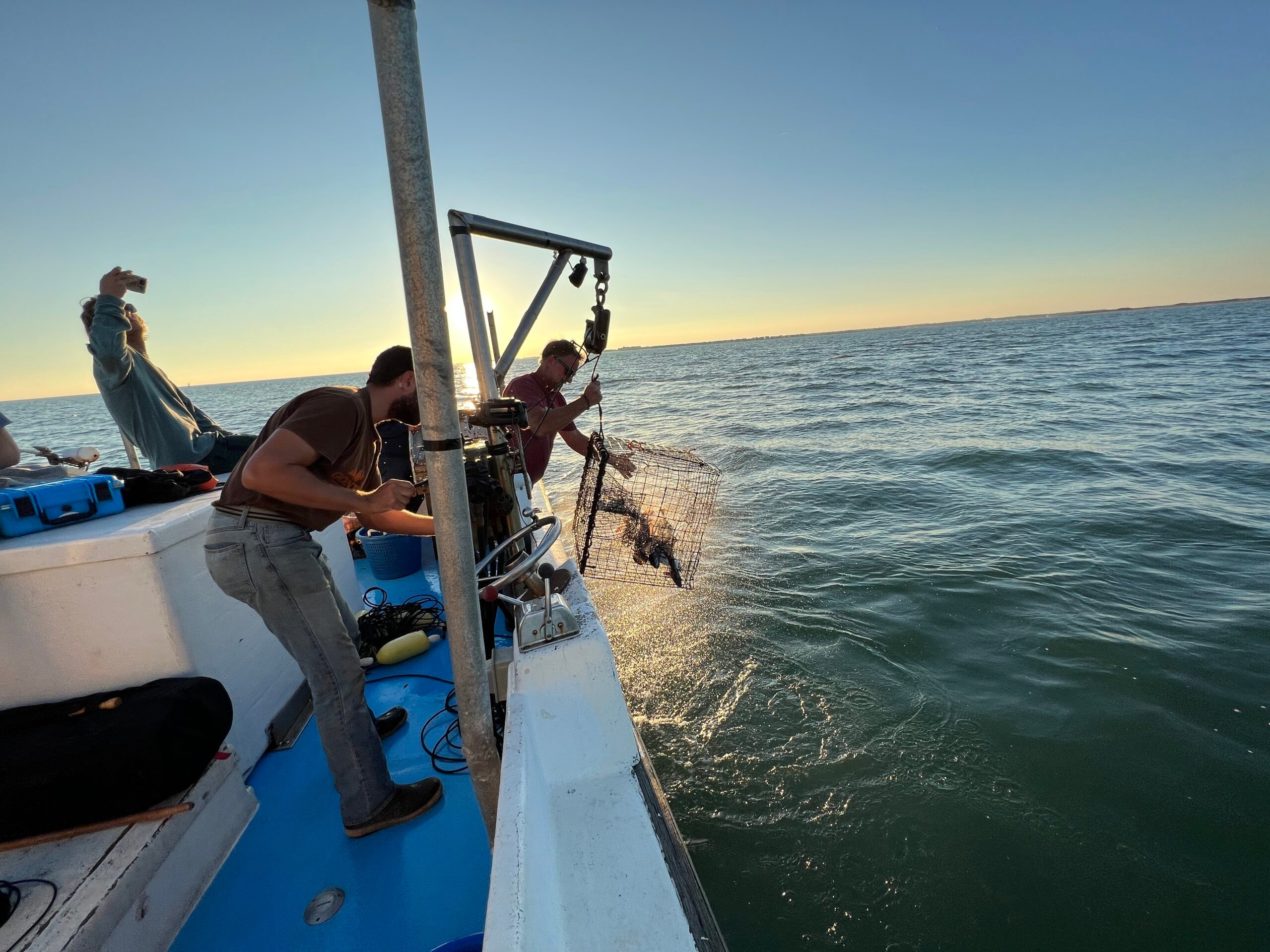
I’m on this adventure along with Plastic Ocean Project (POP), a local Wilmington, NC non-profit founded by a former UNCW Masters student, who also worked in their Chemistry Department for many years. Bonnie Monteleone is in her 10th year officially running POP. Prior to that, she and I met in an ill-fated circumstance that turned into a lifelong friendship and led us to creating her first Public Service Announcement – which involved editing a video slideshow of marine life entangled in fishing line and nets to tune of my didjeridoo. Over a decade later, here we are together again in Sneads Ferry, documenting a viable solution to marine entanglement that also is a huge benefit to the fishermen.
Sustainable Seas Technology, another non-profit from New England, is here for the week working with Captain Mike to prove that this “ropeless” fishing method works on many different levels. If they can prove it, the local Black Sea Bass fishery, which has been shut down for ten years, will be opened back up, and the small family business that began with his father will be allowed to be passed down to his son.
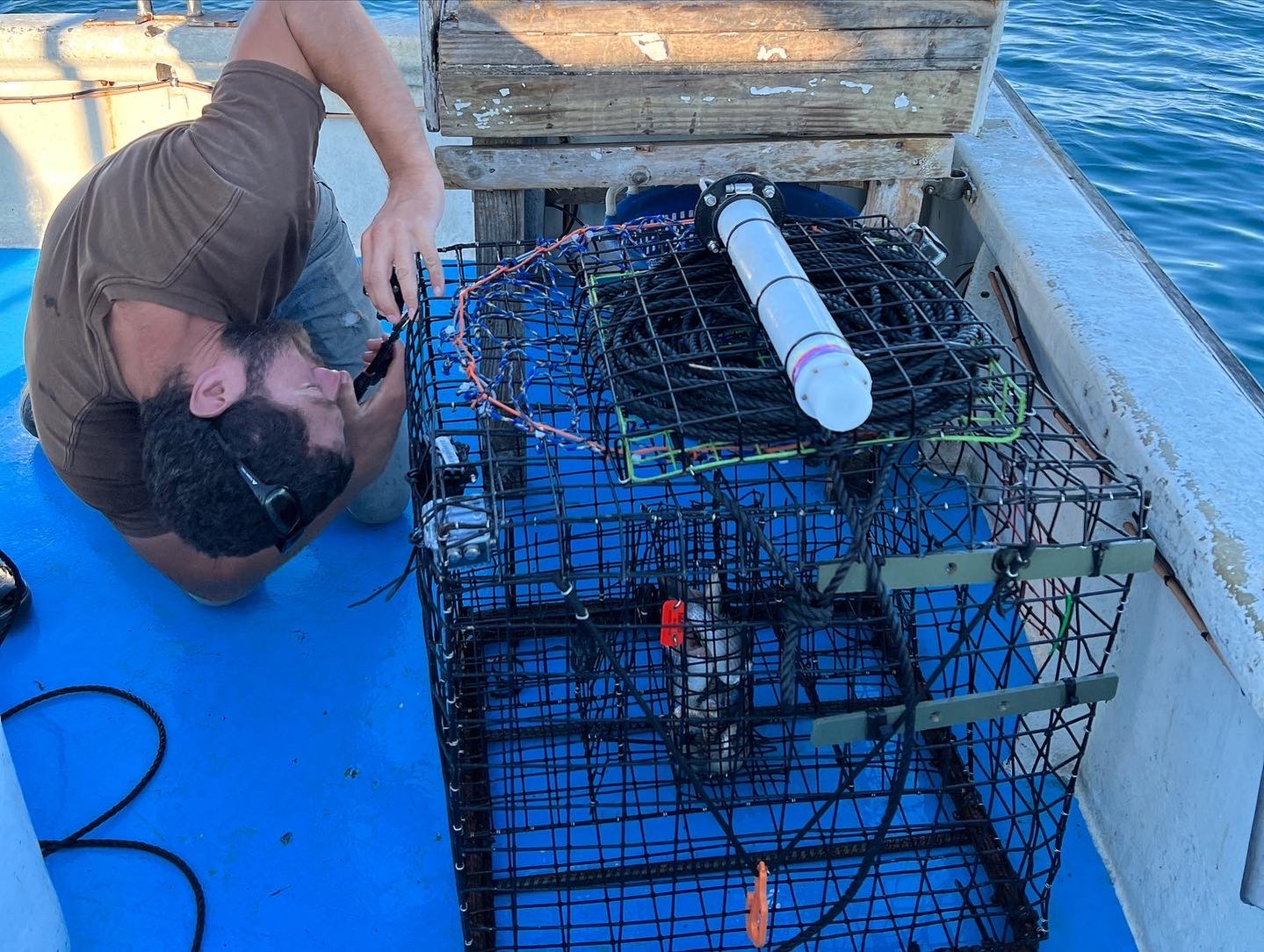
The applications for this technology are so exciting, that there are a pair of fishermen here from San Diego visiting and getting familiar with the gear and the process, CNN is already asking us for footage, and there’s another professional photographer here from New England documenting the work that is happening.
Traditionally, black sea bass are caught in traps, similar to a crab pot. It’s a square cage with chopped bait stuffed in the center and two one-way openings (think of a Chinese finger trap). When the fish get discouraged while attempting to exit, they instinctively swim up through another one-way opening, into the holding area of the trap. The mesh of the cage is big enough for smaller fish to escape, but the big ones remain until the trap is pulled back up onto the boat. These traps can be set in water that is 20′-50′ deep, or in the case of the guys out in California, 100′ to potentially 3000′ deep, with a rope attached to a buoy which remains at the surface.
Just off our NC beaches however, is the main migration highway for the endangered Right Whale among several other whale species. Whales, sea turtles, and other large marine specimen get easily get entangled in these ropes. What’s worse, when they are in high boat traffic areas, lines can be run over and cut by the propellers. This leaves what we then call “ghost traps” on the bottom of the ocean, and dangling ropes just below the surface which can kill and waste hundreds of pounds of marine life within the traps, entangle other marine life with the rope, or foul the props of passing boats.
One of the other dark sides of the fishing industry, which our friends from California have experienced, is poachers. They recently had an entire set of brand new traps stolen from their fishing grounds off of San Diego. Due to the nature of their fishing methods, they may leave their traps out for days, miles out to sea. Any other pirate fishing vessels can clearly see their buoys bobbing there, and selectively take not only their catch but also their gear with no one in sight to stop them. So when our friends return days later, all of their shiny new traps are gone and what’s left are empty old traps.

Due of the migration patterns of the right whales, this fishery has been pushed to the point of extinction…not extinction of the fish! There are plenty of fish, but the extinction happening, is of a way of life and means of supporting families and their community.
Federal regulations have pushed the limits of where they can fish out to 50 miles and 100 miles (depending on the season). This is unfeasible in the middle of the winter, when all the fish are within 5 miles of shore. Thanks to Sustainable Seas Technology (SST) and the experimental permit Captain Mike has been given, a solution is on the horizon, but they have to prove that it works.
SST is developing multiple underwater deployment methods for releasing the buoys and rope which they have coiled in a “clamshell” attached directly to the top of the trap. One of the methods we witnessed was a timed release mechanism that could be set for 30 minutes or 30 days. We would set the timer, drop the trap, mark our gps, and every time that buoy would magically appear exactly where we thought it would.
Another method was triggered by an underwater sound frequency which would trip a 40,000 volt spark, melting/cutting the small string holding the clamshell together. Unfortunately the first one did not work and we had to send our freediver down to retrieve the trap. So it goes when trying new methods and running real world experiments. Luckily for us the weather was perfect, the previous cloud cover had parted, and the wind had completely laid down. Thankfully we had also left some tether on the buoy so it sat at about 30′ instead of 50′ from the surface. The clarity at the surface was about 10-20 feet so it was no problem finding the trap which we had marked on the gps. We managed to recover all of the traps which all worked as planned. We even landed a bunch of black sea bass, a healthy sized triggerfish, some small gag grouper, and a couple gnarly oyster toadfish.
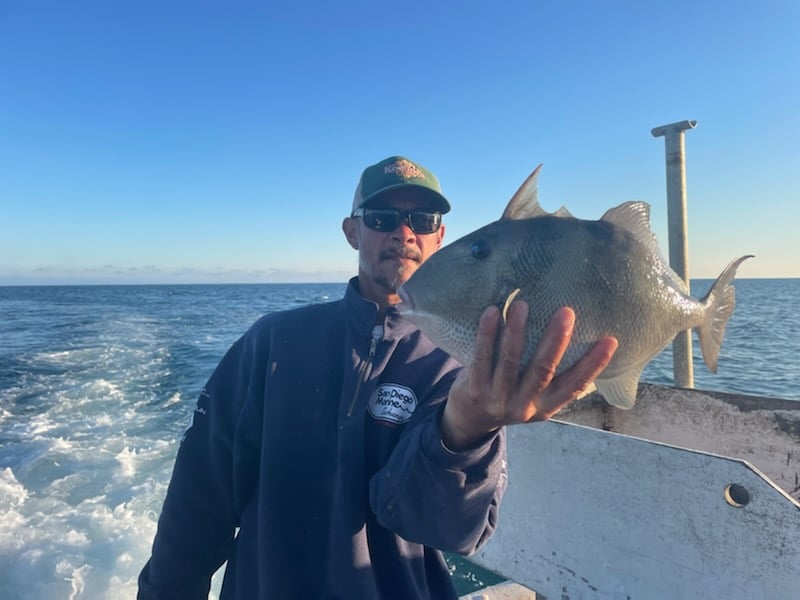
After arriving back at the marina we spoke with Kim Sawicki, a Ph.D. student studying conservation engineering at UMASS-Dartmouth’s School of Marine Science and Technology. As the founder and president of Sustainable Seas Technology 501 (c) (3), she is dedicated to working with innovative technology, fishers, and engineers to save marine mammals from unnecessary human-induced deaths, and to preserve coastal fishing communities as they are.
In her mobile office trailer, she explained her dedication to preserving small fishing communities while creating sustainable solutions to subsea buoy and trap retrieval. One thing she noted was that not every system works for every fishery or fisherman. So she is constantly challenged with finding the right solution by working closely with local fisherman to enable them to fish most efficiently.
This technology is not cheap either, so they are also always working hard to get grants and funding in order to stay afloat. They are currently working with a NOAA grant in order to test and provide financial assistance to these fisherman in Sneads Ferry, because unlike the agriculture industry, these small town fisheries rarely receive subsidies or financial assistance to upkeep and upgrade equipment in order to bring fish to market.
This work is incredibly important, because if it doesn’t work and they can’t prove that it works, this fishery will no longer exist. Captain Mike is very hopeful but also knows that they are walking a very thin line (no pun intended). “This has to work!” he tells me with a nervous desperate look.
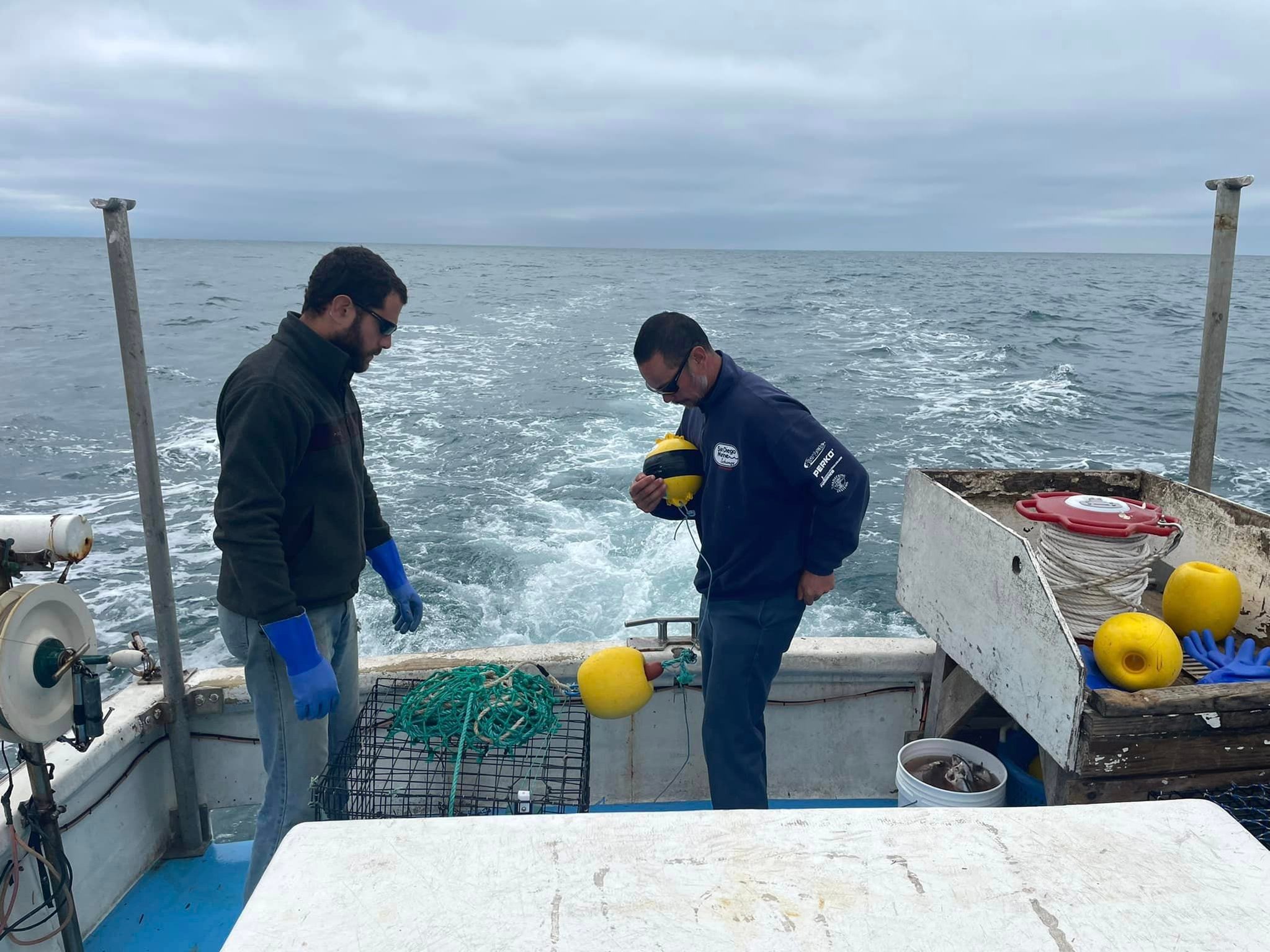
They say a bad day on the water is better than a good day at work, but thankfully I can say I had a great day on the water and “at work”. If you want to support either of these organizations, please follow the links below and know that Wells is engaging, supporting and getting involved in our community in more ways than one.
Plastic Ocean Project
Sustainable Seas Technology
